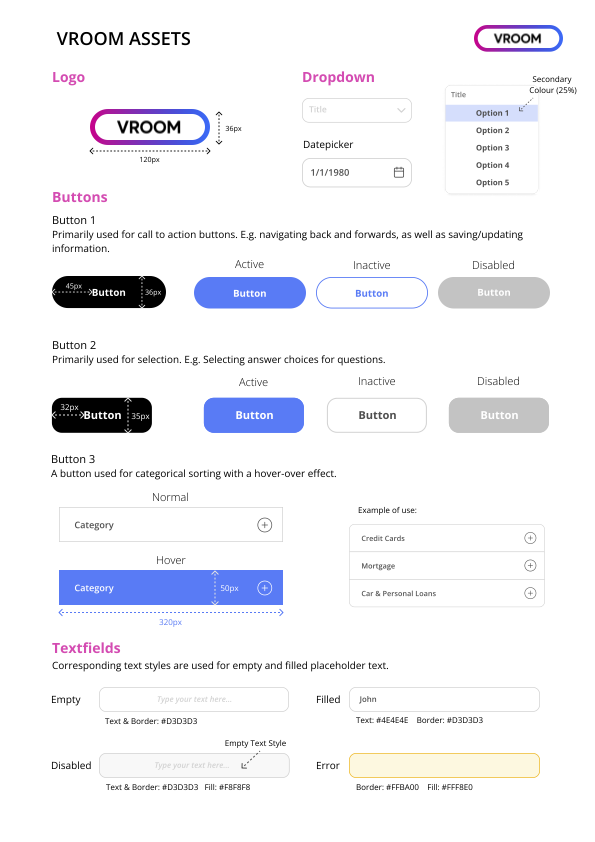
Qualify & Approve customers in 5 minutes
Vroom was an exclusive project for Shop for Cars which aims to qualify approve cUstomers’ car loans directly with leading automotive lenders.
OVERVIEW
Vroom is a widget application designed to allow customers to directly apply for finance on the vehicle’s listing - exposing the customer to over 60 different lenders and the best rate on offer.
This was developed during my time working at Drive On Finance, a fintech startup.
My journey
With only design knowledge and experience being from university, self-practice and a 3 month-long internship, joining a startup as a junior UX designer, who has only just stepped into the field wasn’t easy.
Being the sole UX designer in a startup environment was definitely a learning curve.
I joined Drive On Finance as a UX designer working directly with the founder and a team of developers. I've been extremely fortunate to have been a part of this journey and have grown tremendously. During my time there I have:
Redesigned the design language for vroom including the styles and typography, as well as the reusable components in the application.
Worked closely with developers to design the workflow for the conditional approval process of the application ensuring they are always up to date with changes. Communication was key to having this product launch and i’ve developed the habit of desk checks and constant reporting.
Takeaways
Even though my time was short at Drive On Finance - the lessons and behaviours I gained during my time were extremely valuable. Working as the sole designer was a difficult mountain to climb and also a huge opportunity of a lifetime.
The best part of working solo is the high level of autonomy one gets, collaborating with various stakeholders (from CEO to my Marketing Manager), and being part of the decision-making process of the product. But for someone just out of uni, or new in the industry, there were a lot of challenges that one needs to overcome.
In a startup, time is of the essence, as a designer I would need to ship out designs within a short span of time. In addition to that, startups won’t understand how design processes works, and in most cases, you would be asked to deliver the screens directly. But in any case, having a design process in place would highly impact the quality of design deliverables.
The traditional double diamond method may not always be possible to follow in every project. Therefore, adopting a lean UX process, where I create a minimal viable product (MVP) that can be tested quickly, is most ideal.
Adopting a lean UX process
Resources were definitely limited and I did not have access to the same level of seniority to look up to for support in a startup. Not having access to a larger user base to conduct extensive usability testing makes it difficult to validate my design decisions and ensure that the product is meeting the needs of our users. We were able to utilise feedback from our current customer support base. I was also wearing multiple hats and working within the marketing team as well - this comes as an opportunity to learn more about that field but does impact my ability to focus on the design work.
Limited resources & wearing multiple hats
Overall, having been exposed to the startup world as a junior was an excellent opportunity for me to gain valuable skills and learn to take ownership of my designs. The breadth of experience I was provided with has helped me grow my career and develop a more diverse skill set. I am able to iterate quickly and emphasise the importance of communication through the way I’ve learnt to work in this environment. I will apply these skills to my future roles and continue to nurture them, in order to evolve into a better designer.









